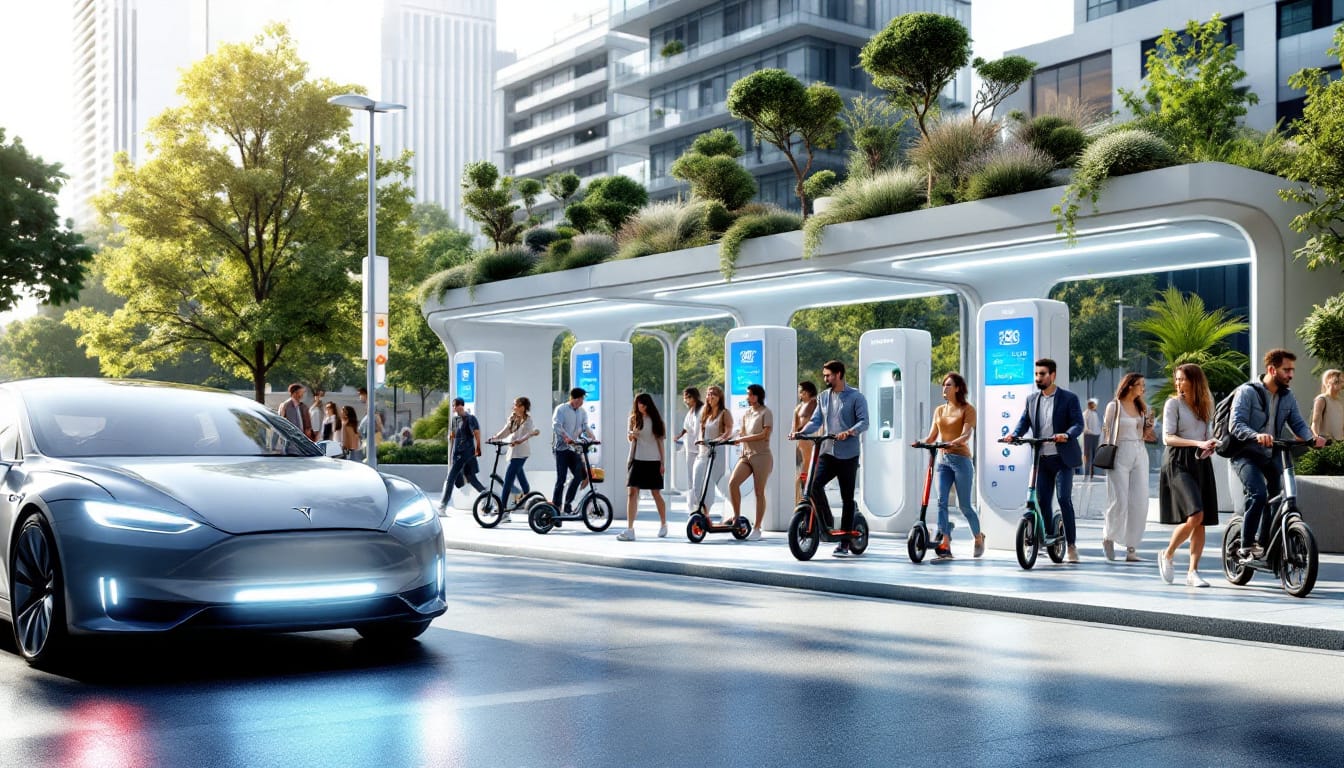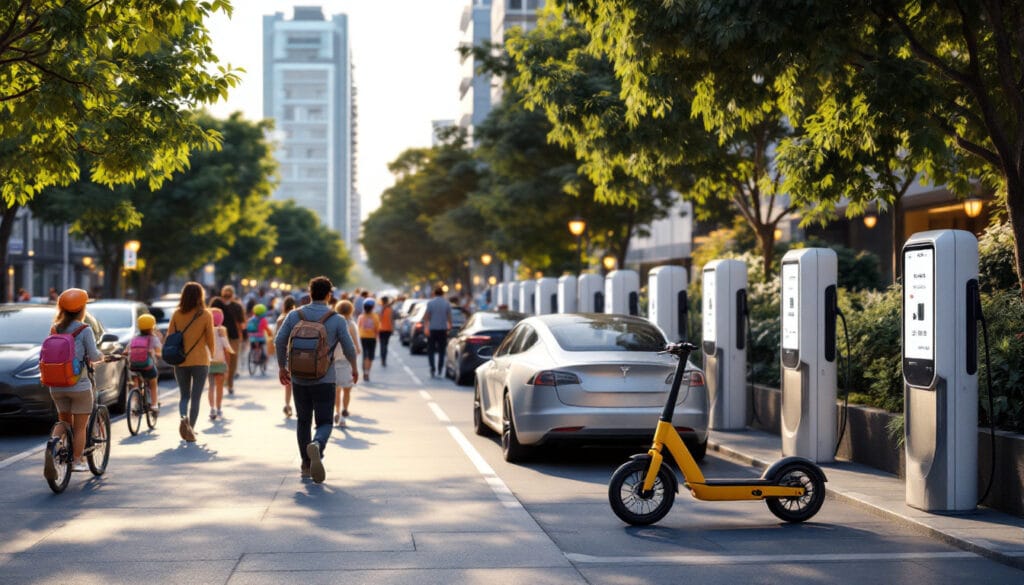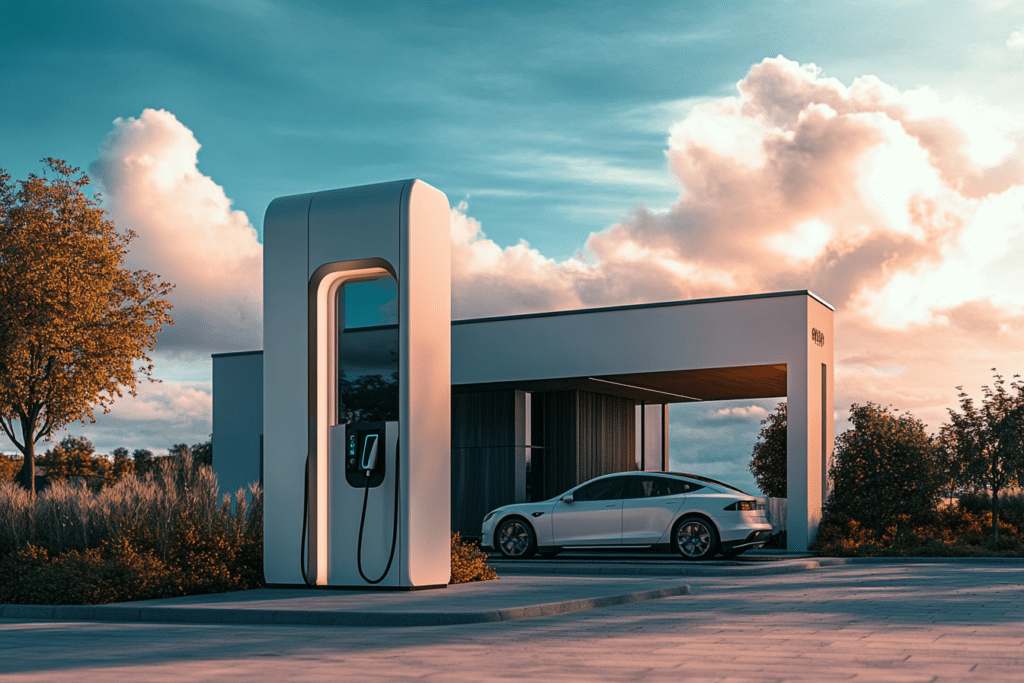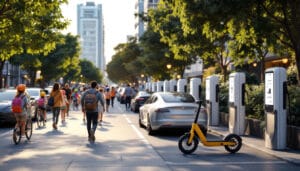Electric mobility encompasses all modes of transport powered by electricity, such as electric cars, scooters, buses, and electric scooters. This approach also includes the essential infrastructures like charging stations and the adaptation of the electric grid. By promoting more environmentally friendly solutions, electric mobility plays a key role in reducing the carbon footprint of the transport sector.
Table of Contents
ToggleGlossary: Electric Mobility
Electric mobility: Refers to all modes of transport powered by electricity. This includes a variety of vehicles such as electric cars, scooters, electric bicycles (e-bikes), buses, and electric scooters.
Electric vehicles: Vehicles powered by one or more electric motors powered by rechargeable batteries. They are distinguished by the absence of greenhouse gas emissions during their use, thus contributing to the reduction of the carbon footprint.
Charging stations: Essential infrastructures that allow for the charging of electric vehicle batteries. Their deployment, such as the 66 million smart meters recently completed in Portugal, is crucial to support the growth of electric mobility. For more information, please see this link.
Hybrid cars: Vehicles that combine a thermal engine and an electric motor. This dual engine configuration helps reduce pollutant emissions, especially in urban environments, by alternating between propulsion modes as needed.
Hydrogen cars: Vehicles that use a fuel cell powered by hydrogen. Their main advantage is that they only emit water vapor, providing a clean alternative to traditional engines. Discover the implications of hydrogen in transport here.
Ecological bonus: Financial assistance provided by the government to encourage the purchase or leasing of low-polluting vehicles, such as electric, plug-in hybrids, and hydrogen vehicles. This bonus can reach up to €4,000, depending on specific conditions.
Electric retrofitting: The process of transforming an internal combustion engine into an electric motor. This approach is supported by financial assistance, such as the retrofitting bonus, which covers up to 80% of the conversion cost, up to €5,000.
E-bikes: Bicycles equipped with an electric motor that activates while pedaling, facilitating urban trips and reducing fatigue. According to the Ipsos barometer, 51% of users in France use them more frequently than they did five years ago.
Motorized Personal Mobility Devices (EDPM): Devices such as electric scooters, unicycles, gyropods, and hoverboards. These devices provide a practical and environmentally friendly mobility solution for urban travel. To explore more about sustainable mobility initiatives, visit this site.
Trends in electric mobility: Electric mobility is experiencing rapid growth with innovations such as the V2G carpooling service launched in Utrecht, the first of its kind in Europe on a large scale. Moreover, major investments, such as the $700 million planned for a battery factory in Shelbyville, demonstrate the rise of this sector. For more information, consult this link and this one.
Smart infrastructure: Integration of advanced technologies, such as smart meters, to optimize the management of energy dedicated to electric mobility. This allows for better resource allocation and increased efficiency of the electric grid. More details are available here.
Environmental impact: Although electric mobility reduces direct emissions, it is important to consider the entire life cycle of the vehicles, including manufacturing and electricity production. The goal is to minimize the overall ecological footprint by continuously improving technologies and infrastructures.

“`html
FAQ on Electric Mobility
Q: What is electric mobility or electrified mobility?
A: Electric mobility includes all modes of transport that operate on electricity, such as electric cars, electric scooters, buses, and electric scooters. It also includes the necessary infrastructures like charging stations and the associated electric grid, playing a key role in reducing the environmental impact of the transport sector.
Q: Why are “clean” cars considered the vehicles of the future?
A: “Clean” cars, such as electric, hybrid, and hydrogen vehicles, are favored for their environmental benefits. They produce fewer pollutant emissions compared to traditional gasoline or diesel vehicles, thereby contributing to the reduction of greenhouse gases.
Q: What are the main challenges of electric mobility?
A: The challenges include reducing greenhouse gas emissions, decreasing fuel-related costs, and addressing challenges related to charging infrastructure. Although the purchase cost of electric vehicles is high, government subsidies and the increase in charging stations facilitate the adoption of electric mobility.
Q: What assistance is available for the acquisition of “clean” vehicles?
A: The government offers several forms of assistance, including the ecological bonus and the electric retrofitting bonus. The ecological bonus can reach up to €4,000 for the purchase of a new low-polluting vehicle, while the retrofitting bonus covers 80% of the cost of converting an internal combustion engine to electric, up to €5,000.
Q: What types of vehicles can benefit from the ecological bonus?
A: Only new passenger cars meeting certain conditions are eligible, such as category M1, registration in France, a cost of under €47,000 including tax, and a weight of less than 2.4 tons. The exact amount of the bonus depends on the vehicle price, type of applicant, and reference tax income.
Q: What are the advantages of electric scooters and EDPM in urban environments?
A: Electric scooters and Motorized Personal Mobility Devices (EDPM) such as electric scooters offer environmentally friendly, practical, and easy-to-use transport solutions in urban settings. They contribute to reducing CO2 emissions and facilitate daily commuting thanks to their maneuverability and accessibility.
Articles similaires
Thank you!
We will contact you soon.














